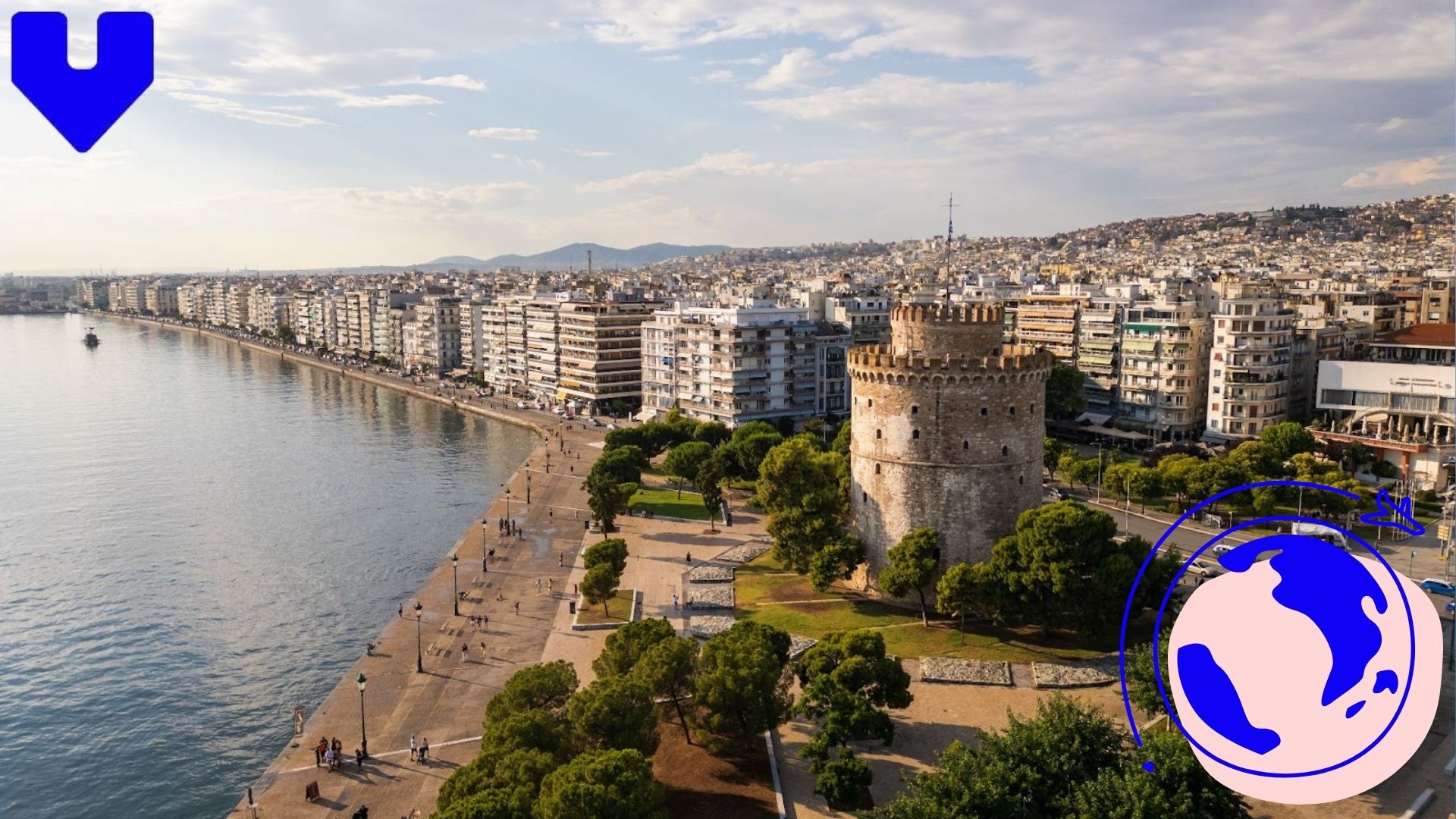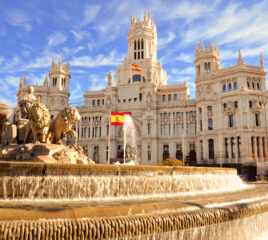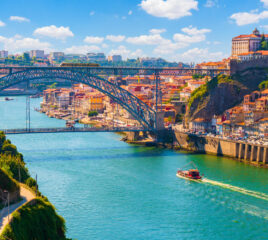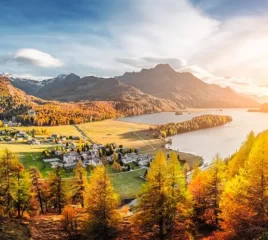Note that iPhone devices from Mainland China aren’t eSIM compatible. Also iPhone devices from Hong Kong and Macao aren’t compatible (except for iPhone 13 Mini, iPhone 12 Mini, iPhone SE 2020 and iPhone XS)
Introduction – Greece Beyond the Capital
For many travellers, Athens is the obvious starting point when exploring Greece. The Parthenon, the buzzing streets of Plaka, and the city’s vibrant nightlife have secured its place on the global travel map. Yet, Greece is far more than its capital. Across the country, a range of cities offers captivating histories, unique traditions, diverse cuisines, and landscapes that rival any postcard view.
Travelling beyond Athens not only broadens your itinerary but also deepens your cultural experience. In smaller cities and regional hubs, you encounter authentic daily life – morning markets where locals greet each other by name, historic lanes untouched by mass tourism, and seasonal festivals that celebrate centuries-old customs.
These destinations are not just alternatives to Athens; they are destinations in their own right. Whether you want to wander cobbled old towns, enjoy seaside sunsets, or taste dishes that never leave the region, Greece’s other cities promise a richness of experience that rewards curious travellers.
Stay Connected in Greece
Enjoy instant data access across cities without physical SIM swaps.
Thessaloniki – Northern Greece’s Cultural Capital
The City’s Distinct Identity
Thessaloniki is often called Greece’s “second city”, but to those who know it well, it’s every bit as compelling as the capital. Founded in 315 BC by King Cassander of Macedon and named after the sister of Alexander the Great, the city has always been a place of movement, trade, and cultural exchange. Romans, Byzantines, Ottomans, and a once-thriving Jewish community have all left their imprint, shaping a city that feels layered yet effortlessly connected.
Unlike Athens, Thessaloniki has a gentler pace. Its wide waterfront promenade, stretching for kilometres along the Thermaic Gulf, is where life flows – joggers pass families on evening strolls, fishermen cast their lines, and friends gather over coffee at sunset. Inland, a tangle of streets hides Byzantine churches, Ottoman hamams, modern art spaces, and lively markets. The combination of history and youthful vibrancy, thanks to its large student population, creates a distinctive atmosphere that is as welcoming as it is stimulating.
Landmarks You Shouldn’t Miss
White Tower- Perhaps the city’s most iconic landmark, the White Tower stands at the edge of the seafront. Built during the Ottoman period in the 15th century, it has served as a fortress, garrison, and even a prison. Today, it houses a museum charting the city’s history and offers panoramic views from its top platform.
Ano Poli (Upper Town)- The only part of Thessaloniki to survive the Great Fire of 1917, Ano Poli is a time capsule of narrow cobbled lanes, brightly painted houses, and small chapels. Its vantage points along the Byzantine walls give sweeping views of the city and the gulf beyond.
Rotunda of Galerius- This massive cylindrical structure, dating back to the early 4th century, was built as part of Emperor Galerius’ grand plan for the city. Over the centuries, it has been a mausoleum, a Christian church, and a mosque – each chapter adding to its rich character.
Arch of Galerius and Roman Forum- The triumphal arch celebrates Galerius’ victory over the Persians, its detailed carvings a fascinating study in Roman art. Just a short walk away, the Roman Forum offers another glimpse into the ancient city’s layout.
Food, Nightlife & Local Life
Thessaloniki’s culinary reputation is unmatched in Greece. Start your day with bougatsa, a filo pastry filled with sweet cream or savoury cheese, best enjoyed in a busy local café. Lunch might be gyros or grilled fish from a neighbourhood taverna, while dinner in the Ladadika district will treat you to meze spreads, fresh seafood, and regional wines.
The city’s nightlife is equally impressive. Rooftop bars, jazz clubs, and live music venues offer something for every taste, and the student influence keeps prices reasonable. In summer, open-air concerts and cultural festivals keep the evenings alive.
Best Time to Visit & Travel Tips
The most comfortable months to visit are April to June and September to October, when the weather is warm but not stifling. The city is well connected to the rest of Greece by air, bus, and rail. Once here, most key attractions are within walking distance, and the city’s buses reach further-flung neighbourhoods and beaches.
For travellers seeking an introduction to Greece beyond its capital, Thessaloniki delivers the perfect balance of cultural heritage, lively urban life, and warm hospitality. It’s a city where you can immerse yourself in history by day and enjoy vibrant dining and entertainment by night – all without losing that relaxed, local feel.
Travel Data Without Limits
Browse, navigate, and share your trip moments anywhere in Greece.
Chania – Crete’s Venetian Harbour City
A Coastal City Steeped in History
Chania, on the north-western coast of Crete, is one of Greece’s most picturesque and historically layered cities. Its strategic position made it a valuable port for centuries, drawing the attention of the Venetians, Ottomans, and later the modern Greek state. Each left their mark, shaping a city where medieval fortifications, domed mosques, and neoclassical mansions sit comfortably alongside vibrant market halls and café-lined streets.
At the heart of Chania lies its Old Town, enclosed by remnants of Venetian walls. This maze of narrow lanes, stone archways, and pastel-painted façades offers a sense of timelessness. Every turn reveals a courtyard shaded by bougainvillaea, a small shop selling handmade leather goods, or a taverna where local families have been cooking the same recipes for generations.
Highlights Around the Old Town
Venetian Harbour & Lighthouse
The harbour is Chania’s crown jewel. Built by the Venetians in the 14th century, it remains the city’s focal point. The elegant lighthouse at its entrance, reconstructed in the 19th century, is a romantic landmark best admired during sunset, when the sky deepens into shades of gold and crimson.
Seamless Greece Connectivity
Stay connected across Greece. Apply VOYE15 for 15% off.
Nafplio – Greece’s Romantic Seaside Retreat
From First Capital to Modern Escape
Nafplio, perched on the shores of the Argolic Gulf in the Peloponnese, is often described as one of Greece’s most beautiful towns. It was the first capital of the modern Greek state after independence in the 19th century, but its history stretches back much further, shaped by Venetian, Ottoman, and Byzantine rule.
The result is a captivating blend of neoclassical mansions, Venetian fortresses, Ottoman fountains, and elegant piazzas. Set against a backdrop of sea and mountains, Nafplio exudes romance and refinement. Whether you’re exploring its atmospheric streets or simply watching the sunset from the promenade, the city feels like it was made for slow, lingering enjoyment.
Fortresses, Castles, and Views
Palamidi Fortress- Standing high above the city, Palamidi was built by the Venetians in the early 18th century. Reached via the famous 999 steps from the Old Town or by road, it offers commanding views over Nafplio, the gulf, and the surrounding countryside. The fortress itself is a fascinating network of bastions, tunnels, and storerooms.
Bourtzi Castle- Set on a small islet just off the harbour, Bourtzi was also built by the Venetians to protect the city from naval attack. Today, it is accessible by boat and provides a unique perspective of Nafplio’s waterfront.
Akronafplia- The oldest of Nafplio’s fortifications, Akronafplia, occupies a rocky outcrop between the Old Town and the sea. Its walls offer panoramic views and quiet walking paths perfect for sunset photography.
Your eSIM Data Solution
Reliable coverage & instant setup. Enjoy 15% off with VOYE15.
Old Town Strolls & Seafront Leisure
Nafplio’s Old Town is a joy to explore on foot. Narrow cobblestone lanes wind past pastel-painted buildings adorned with wrought-iron balconies and blooming bougainvillaea. Small boutiques sell handmade jewellery, ceramics, and traditional textiles, while shaded cafés invite you to pause and watch daily life unfold.
The waterfront promenade curves gently along the bay, dotted with benches and lined with palm trees. Fishing boats bob in the harbour, their nets drying in the sun, while yachts glide in and out of the marina. Evenings bring a warm glow to the façades, as locals and visitors gather for a pre-dinner stroll, or volta, a cherished Greek tradition.
Best Time to Visit & Travel Tips
Spring and early autumn are ideal times to enjoy Nafplio without the heat and larger crowds of summer. The town is easily reached by bus or car from Athens, with the journey taking about two hours. Once in Nafplio, walking is the best way to explore, though hiring a car is useful for visiting nearby sites.
Nafplio’s combination of history, beauty, and relaxed seaside charm makes it an essential stop for anyone exploring Greece beyond its capital. It’s a place that leaves a lasting impression, not just for its sights, but for the gentle rhythm of life that encourages you to slow down and savour every moment.
Agora Market- Opened in 1913, the covered Agora Market is a sensory feast. Stalls overflow with local cheeses, olives, fresh fish, wild herbs, and sweet pastries. It’s a perfect spot to pick up picnic supplies or edible souvenirs.
Maritime Museum of Crete- Located at the entrance to the harbour, this museum traces Crete’s naval history from Minoan shipbuilding to the island’s pivotal role during World War II. Models, maps, and restored vessels bring maritime traditions to life.
Splantzia District- Less crowded than the harbourfront, this neighbourhood has a laid-back charm. Tree-shaded squares, Ottoman-era buildings, and traditional coffee houses make it ideal for an unhurried afternoon wander.
Unlock Instant Connectivity
Tour, share & stream worry-free. Use VOYE15 to save.
Nature Beyond the City Walls
Chania is not just about urban beauty – it’s a gateway to some of Crete’s most breathtaking landscapes. The Samaria Gorge, part of a national park, offers a challenging 16-kilometre trek through towering cliffs and rich biodiversity. Hikers are rewarded with stunning scenery and the chance to spot rare species like the Cretan wild goat.
For beach lovers, Balos Lagoon dazzles with shallow turquoise waters and pale sandbanks, while Elafonissi Beach offers a more remote escape, famed for its pink-tinged sands. Both are accessible via organised tours or self-drive trips, with views along the way that are almost as beautiful as the destinations themselves.
If you prefer a slower pace, the surrounding countryside is dotted with olive groves, vineyards, and small villages where Cretan hospitality thrives. Visitors are often welcomed with a glass of raki and invited to join in whatever local celebration is underway.
Practical Travel Pointers
Chania is served by an international airport with regular flights from Athens and other European hubs. Ferries from Piraeus also connect Crete to the mainland, arriving in nearby Souda Bay.
Within the city, most attractions are within walking distance. For trips to beaches, gorges, and remote villages, hiring a car offers the most flexibility, although local buses do run to some popular spots. Accommodation ranges from boutique hotels in restored Venetian mansions to seaside resorts catering to longer stays.
Chania’s blend of history, natural beauty, and warm hospitality makes it one of Greece’s most rewarding destinations. Whether you’re sipping coffee in a quiet square, hiking through rugged landscapes, or watching the sunset over the harbour, the city offers a perfect balance of cultural depth and coastal relaxation.
Stay Online in Greece
Instant activation + 15% off with VOYE15.
Ioannina – Lakeside Charm in Epirus
A City Between Mountains and Water
Nestled on the shores of Lake Pamvotida and surrounded by the Pindus Mountains, Ioannina feels worlds apart from Greece’s sun-drenched islands. The city’s setting gives it a tranquil, almost storybook quality, enhanced by mist rising from the lake in the early morning and the sound of church bells echoing across the water.
Ioannina’s history is just as striking as its scenery. It flourished under Ottoman rule in the late 18th and early 19th centuries, becoming a centre of education, craftsmanship, and commerce. This cultural richness is still visible in its architecture, cuisine, and traditions.
Historic Quarter & Castle District
The heart of Ioannina lies within its castle walls – one of the oldest continuously inhabited fortresses in Greece. Here, cobblestone streets lead past stone houses, small squares, and centuries-old chapels. Two citadels divide the area: the Itch Kale, where Ali Pasha once resided, and the Aslan Pasha Mosque, now home to the Municipal Ethnographic Museum.
The castle district offers an atmospheric journey through the city’s past, from Byzantine foundations to Ottoman elegance. As you wander, you’ll encounter silversmith workshops, hidden courtyards, and cafés serving thick Greek coffee alongside syrup-soaked pastries.
Museums and Cultural Heritage
Ioannina is famed for its silversmithing tradition, and the Silversmithing Museum, located within the castle, showcases intricate jewellery, tableware, and decorative objects that highlight the city’s craftsmanship. The Byzantine Museum displays religious icons, frescoes, and artefacts that chart the city’s long spiritual heritage.
In the modern city centre, art galleries and cultural spaces host exhibitions, concerts, and workshops, keeping Ioannina’s creative spirit alive. Markets and speciality shops sell local products such as honey, herbs, and handwoven textiles, providing perfect souvenirs for travellers seeking something authentic.
Gateway to Zagori and Vikos Gorge
Ioannina is the ideal base for exploring the Zagorohoria, a network of 46 traditional stone villages scattered across the mountains. Each village has its own charm – arched stone bridges, slate-roofed houses, and plane tree-shaded squares are common features.
Nature lovers should not miss the Vikos Gorge, a natural wonder recognised by the Guinness World Records for being one of the deepest gorges in proportion to its width. Hiking routes range from challenging multi-day treks to gentler paths with breathtaking viewpoints.
Best Time to Visit & Travel Tips
Spring and early autumn offer the best weather for both city exploration and mountain excursions. Ioannina is accessible via a small airport with flights from Athens, or by bus from Thessaloniki and other northern cities.
Within the city, walking is the best way to enjoy its compact historic areas, but hiring a car is recommended for exploring the surrounding mountains and villages. Warm layers are essential outside of summer, as evenings can be cool due to the altitude.
Ioannina’s blend of lakeside serenity, rich cultural history, and access to some of Greece’s most stunning mountain scenery makes it a destination that rewards slow, immersive travel. It’s a place where history is lived as much as it is remembered – and where the beauty of both city and nature leaves a lasting mark on every visitor.
Stay Connected While Exploring Greece
Discover hidden gems with seamless data everywhere you go.
Kalamata – The Peloponnese’s Flavourful Hub
Historic Landmarks & Architecture
Kalamata Castle- Overlooking the city from a hillside, this medieval fortress offers panoramic views of both the coastline and the mountains. The ruins, surrounded by pine trees, are especially atmospheric at sunset.
Church of the Holy Apostles- A symbol of the Greek War of Independence, this small Byzantine church dates to the 11th or 12th century and was the site where the revolution was declared in 1821.
Historical and Folklore Museum- Housed in a 19th-century mansion, the museum displays local artefacts, costumes, and traditional tools that paint a picture of life in the Messinia region over the centuries.
Beaches, Mountains, and Festivals
Kalamata’s long sandy beach stretches along the city’s waterfront, lined with cafés, restaurants, and hotels. The clear, shallow waters make it a favourite for families, while water sports enthusiasts can try paddleboarding or windsurfing.
The Taygetus Mountains provide a dramatic backdrop and countless opportunities for outdoor activities, from hiking and mountain biking to birdwatching. In spring, the slopes are covered in wildflowers, while autumn brings a cooler climate ideal for long walks.
The Kalamata International Dance Festival, held every July, attracts performers and audiences from around the world, transforming the city into a stage for contemporary dance and cultural exchange.
Explore Hidden Greece with Ease
Maps, chats & sharing made simple with eSIM.
Perfect for Slow Travel
Kalamata is a city that rewards those who linger. Its central market is a feast for the senses, with stalls piled high with fresh produce, herbs, and of course, the famous olives and olive oil. Tavernas serve hearty Messinian dishes, from stuffed vegetables to fresh-caught fish. Cafés stay busy late into the evening, reflecting the locals’ love for socialising over a leisurely coffee.
For travellers planning an itinerary that moves beyond the capital, this coastal hub is among the top cities to visit in Greece that isn’t Athens, offering both authentic urban life and easy access to nature.
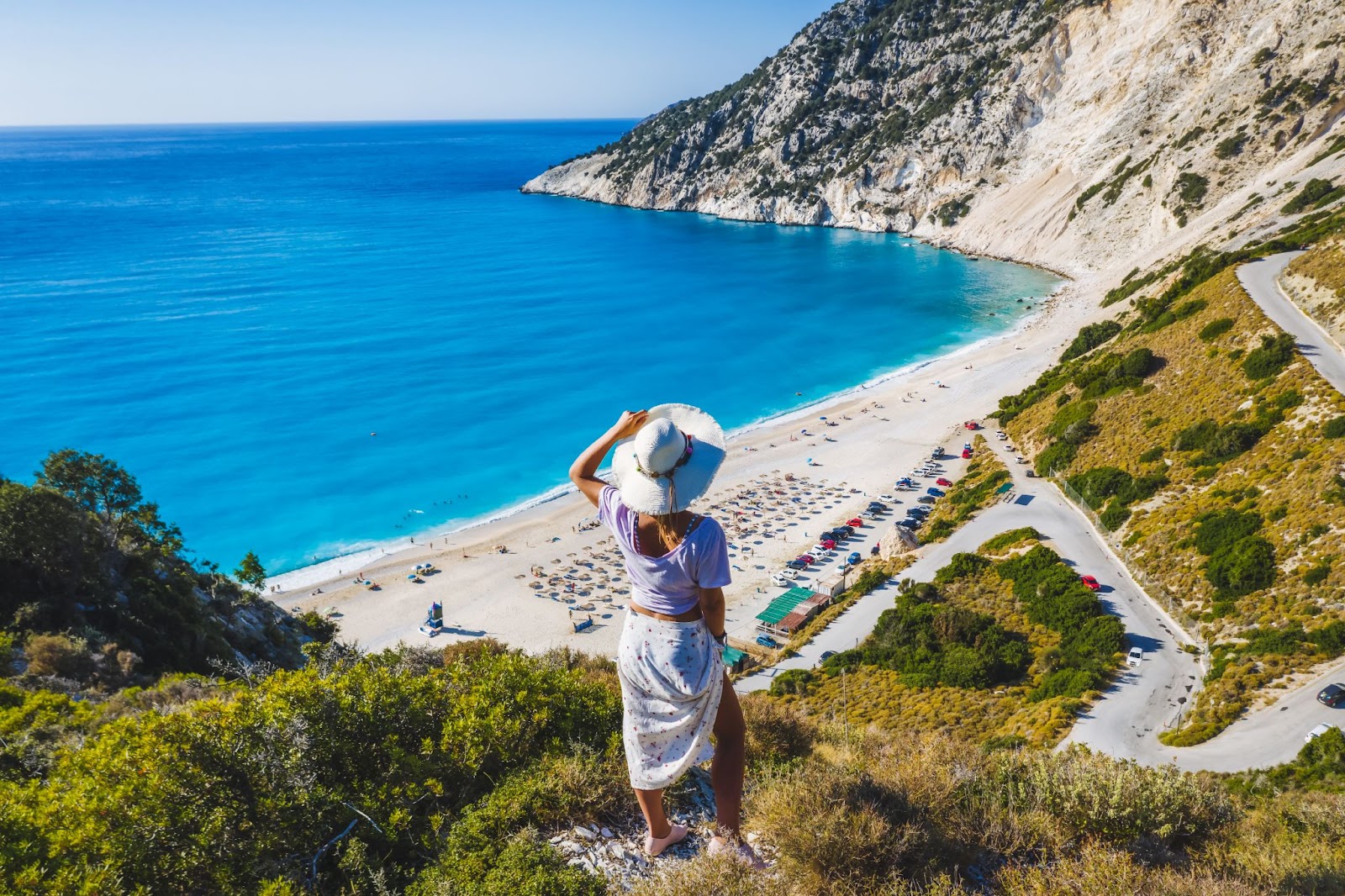
FAQs
- How can I stay connected while visiting these Greek cities?
You can use a Voye Global eSIM for instant activation and reliable data coverage across multiple regions in Greece. - What’s the best season to explore Greece beyond Athens?
Spring (April-June) and early autumn (September-October) offer warm weather, fewer crowds, and beautiful landscapes. - Does Voye Global offer flexible eSIM plans for travellers in Greece?
Yes, Voye Global provides a range of data plans suitable for short or extended stays, with no physical SIM required. - Which of these cities is best for history lovers?
Nafplio and Ioannina are excellent choices for history enthusiasts due to their preserved architecture and museums. - Can I activate my Voye Global eSIM before arriving in Greece?
Absolutely – you can set it up in advance so it’s ready to use upon arrival. - Which city is the best for combining beaches and mountains?
Kalamata offers both sandy beaches and quick access to the Taygetus Mountains. - How do I purchase a Voye Global eSIM for Greece?
You can buy directly from Voye Global’s website, choose your plan, and activate it instantly. - Is public transport reliable in these cities?
Yes, public buses and taxis are available, though renting a car is best for exploring the surrounding areas. - Can I use the same Voye Global eSIM in multiple Greek cities?
Yes, one eSIM works seamlessly across all your destinations in Greece. - Are these cities suitable for slow travel?
Definitely – each city offers a relaxed pace, local food culture, and a welcoming atmosphere ideal for longer stays.
Seamless Connectivity in Greece
Skip SIM cards—activate your eSIM in minutes.

Seamless Mobile Data Everywhere







